Free download: Top 10 Natural & Easy Remedies for Joint Pain from Home. Learn these helpful remedies.
Estimated Reading Time: 6 minutes read
Dealing with elbow pain during lifting is a common issue that can affect anyone engaged in physical activities, from gym-goers to those involved in manual labor. This pain can be frustrating and limiting, making simple lifting tasks challenging.
Often, it’s a sign that something is amiss either with your lifting technique or with the elbow joint itself. Understanding the causes and implementing effective strategies can help manage this pain, allowing for a safer and more comfortable lifting experience.
Table of Contents
Causes of Elbow Pain When Lifting
Elbow pain when lifting can stem from various sources, each requiring its own approach to management:
- Overuse and Strain: Repeated motions, especially with heavy weights, can strain the muscles and tendons around the elbow.
- Incorrect Lifting Technique: Using improper form can put undue stress on the elbow joint.
- Pre-existing Conditions: Issues like tendonitis, bursitis, or arthritis can be exacerbated by lifting activities.
- Lack of Warm-Up: Not warming up adequately before exercise can leave the muscles and tendons around the elbow susceptible to injury.
- Rapid Increase in Activity: Suddenly increasing the intensity or frequency of lifting can lead to elbow strain.
- Muscle Imbalance: Weakness in surrounding muscles can put extra pressure on the elbow during lifting.
Stretching and Strengthening for Elbow Health
Regularly incorporating stretching and strengthening exercises can significantly alleviate and prevent elbow pain related to lifting:
1. Wrist Flexion Stretch


- Straighten your arm and bend your wrist forward as if signaling someone to “come.”
- Use your opposite hand to gently apply pressure across the back of your hand and pull it towards you until you feel a stretch on the top of your forearm.
- Hold for 30 seconds.
- Repeat 5 times, then move to the other arm.
2. Wrist Extensor Stretch

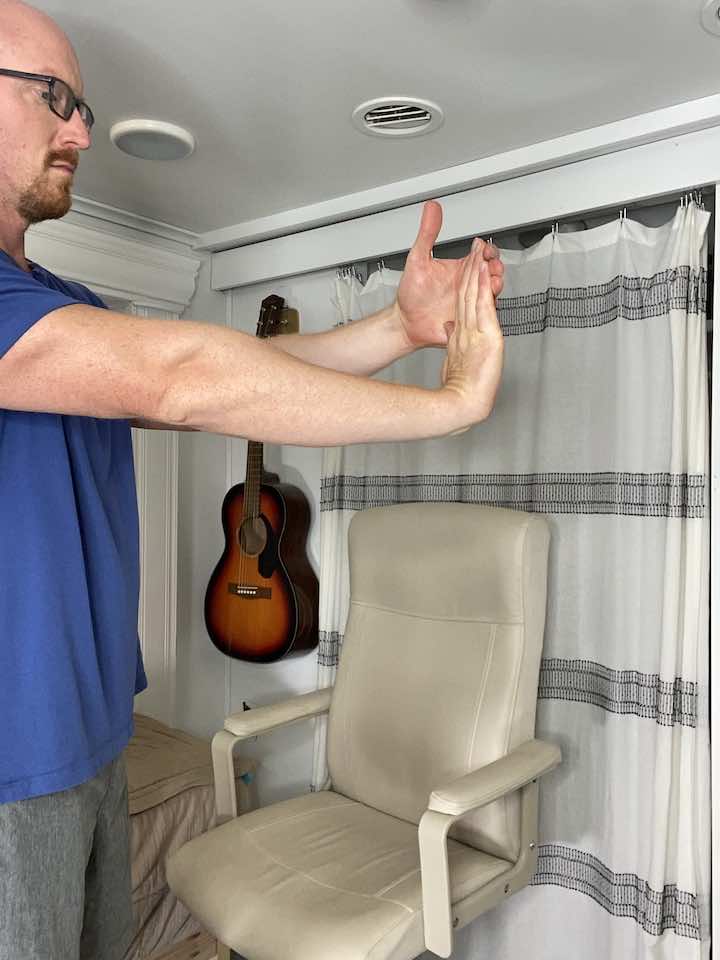
- Straighten your arm and bend your wrist as if signaling someone to “stop.”
- Use your opposite hand to gently apply pressure across the palm and pull it toward it until you feel a stretch inside your forearm.
- Hold for 30 seconds.
- Repeat 3 times, then move to the other arm.
3. Bicep Stretch


- Stand next to a wall, with your affected arm closest to it.
- Extend your arm behind you and place your palm flat against the wall.
- Slowly rotate your body away from the wall until you feel a gentle stretch in your bicep.
- Hold this position for 30 seconds.
- Release and repeat the stretch 2 more times for a total of 3 repetitions.
Resistance Training for Stronger Support
After addressing tight muscles through stretching, incorporating resistance training is a crucial step for enhancing elbow support and resilience. This kind of training focuses on strengthening the muscles around the elbow joint, which play a vital role in lifting and other activities. By building up these muscles, you not only provide better stability to the elbow but also reduce the risk of future injuries.
1. Rows with Resistance Band
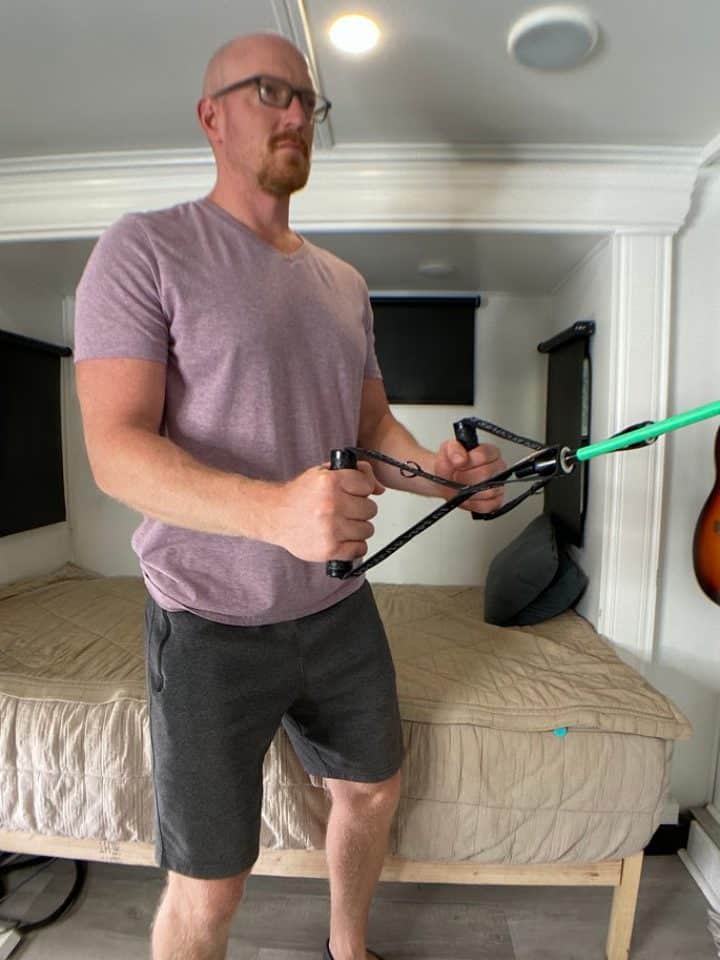
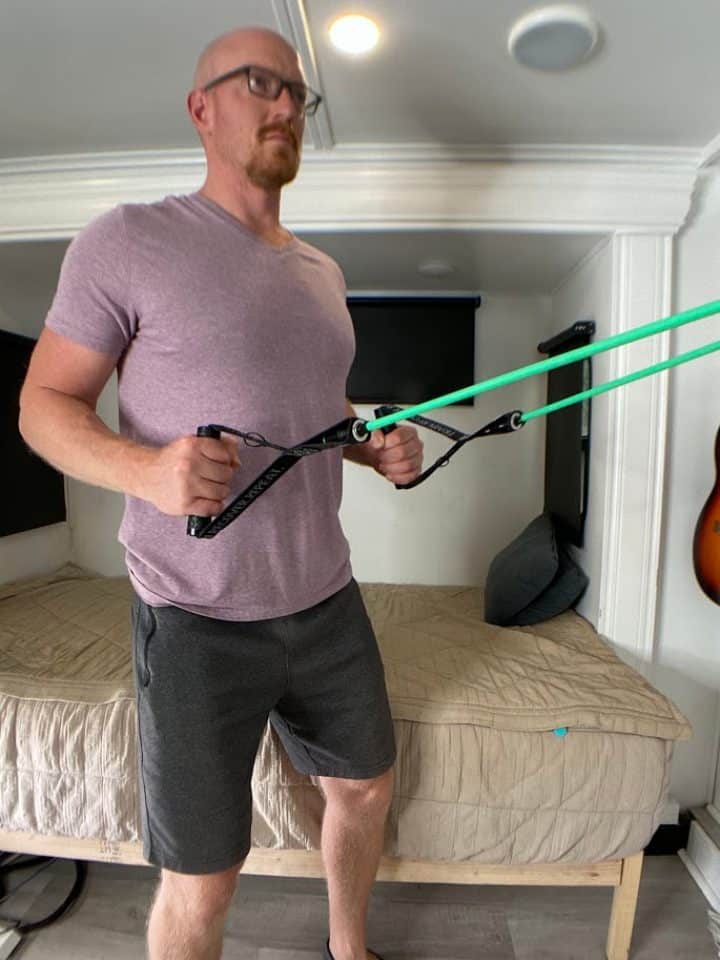
- Hold on to the ends of a resistance band (light, medium or heavy), which you can attach to a door knob.
- Begin with the arms elevated in front of you to shoulder height and the palms facing each other.
- Step back far enough that the resistance bend has a little tension.
- Pull back on the band by bending the elbows and swinging the arms back next to you. Make sure to squeeze the shoulder blades together.
- Hold for 2 seconds, then return to your starting position.
- Repeat 10 repetitions for 3 sets.
2. Pull Downs with Resistance Band
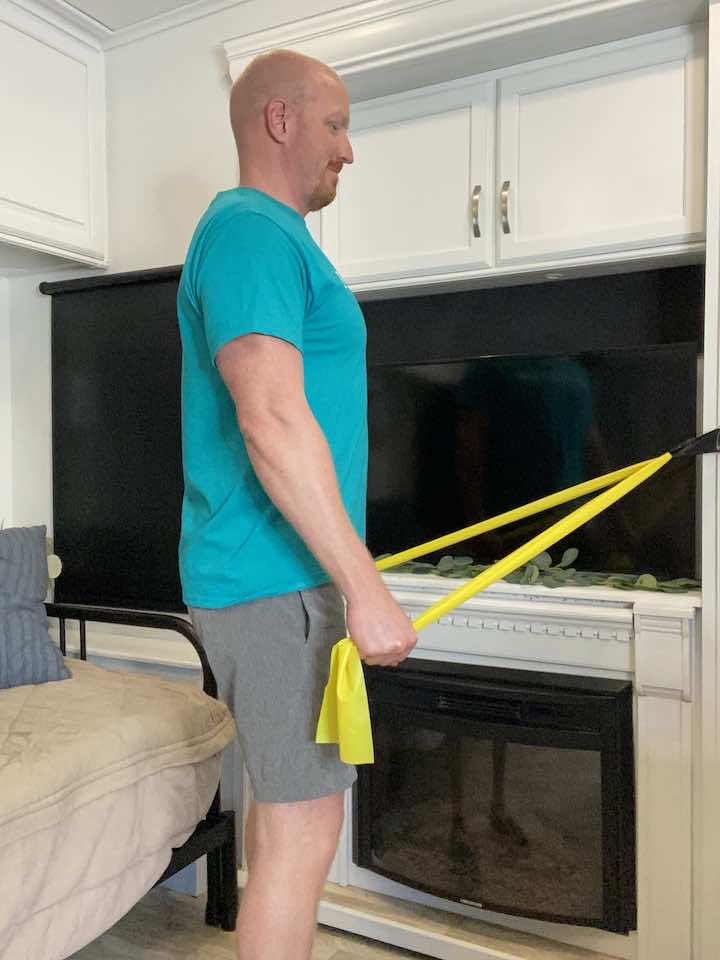

- Securely attach the resistance band to a high anchor point, such as a pull-up bar or a sturdy doorframe.
- Hold the band with both hands, palms facing forward and hands shoulder-width apart.
- Stand facing the anchor point with your arms extended upwards and your hands positioned above your head.
- Keeping your elbows straight, pull the band down towards your chest while squeezing your shoulder blades together.
- Pause at the bottom of the movement and then slowly return to the starting position.
- Repeat for 10 repetitions and aim for 3 sets.
3. Bicep Curls with Resistance Band


- Stand with both your feet in the middle of the resistance band, holding one end of the band in one hand.
- Keep your arms straight and by your sides, with your palms facing forward.
- Slowly bend your elbow, bringing your hands towards your shoulders while keeping your elbows close to your sides.
- Hold a moment, then slowly straighten your arms to return to the starting position.
- Repeat the movement for 10 repetitions, then switch to the other arm.
- Aim for 3 sets of this exercise.
4. Tricep Extension with Resistance Band

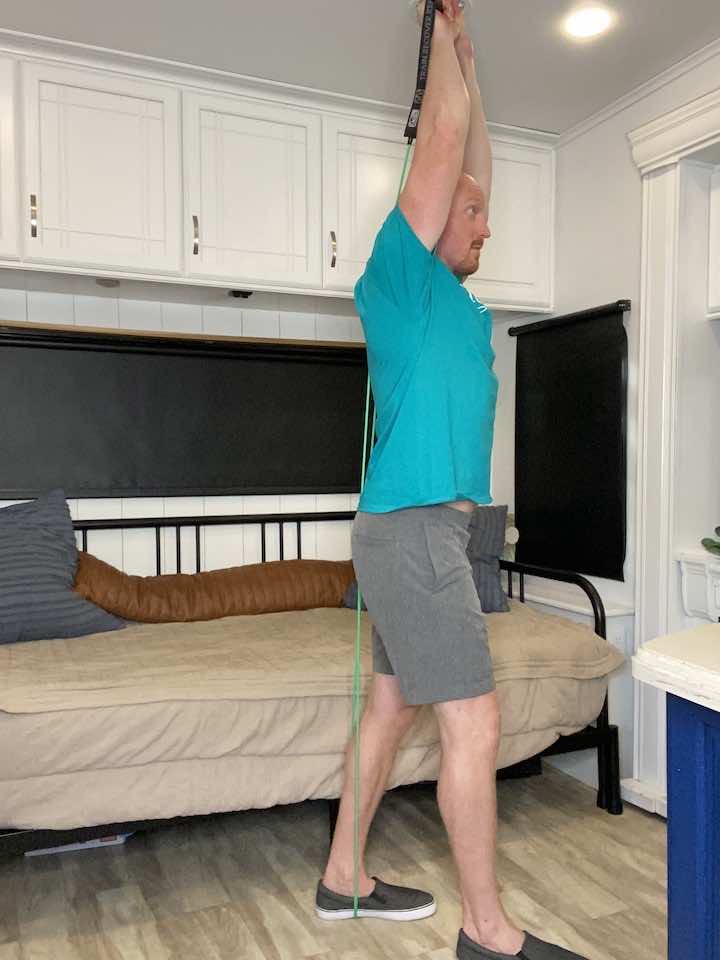
- Stand in the middle of the band with one foot, holding the other end of the band with both hands.
- Extend your arms straight up above your head.
- Lower the band behind your head, bending at the elbow and keeping your elbows pointing forward.
- Extend your arms back up, straightening your elbows.
- Repeat the movement for 10 repetitions, then switch to the other arm.
- Aim for 3 sets of this exercise.
5. Wrist Lifts


- Sit in a chair with a soup can or lightweight in your hand.
- Rest your forearm on a table or on your lap, with your palm facing downward and your wrist in a neutral position.
- Keep your elbow bent at a 90-degree angle.
- Lift the weight by flexing your wrist and raising your hand up toward your body.
- Hold the contraction for a few seconds, then slowly lower the weight back down to the starting position.
- Make sure to isolate the movement to your wrist and avoid using your forearm to lift the weight.
- Repeat the movement for 10 repetitions and 3 sets, and gradually increase the weight or resistance as you progress.
6. Wrist Curls


- Sit in a chair with a soup can or lightweight in your hand.
- Rest your elbow on a table, with your palm facing upward and your wrist in a neutral position.
- Keep your forearm still and isolated, and lift your wrist by curling it toward your body.
- Hold the contraction for a few seconds, then slowly return to the starting position.
- Remember to isolate the wrist and avoid using your forearm to lift the weight.
- Repeat the movement for 10 repetitions and 3 sets, and gradually increase the weight or resistance as you progress.
Conclusion
Tackling elbow pain when lifting involves a careful balance of exercise, proper technique, and understanding the limits of your body. By focusing on both prevention and management through targeted exercises and safe lifting practices, you can reduce the risk of elbow pain. Remember, if your elbow pain persists or affects your daily activities, seeking professional medical advice is crucial for a tailored approach to your condition.












